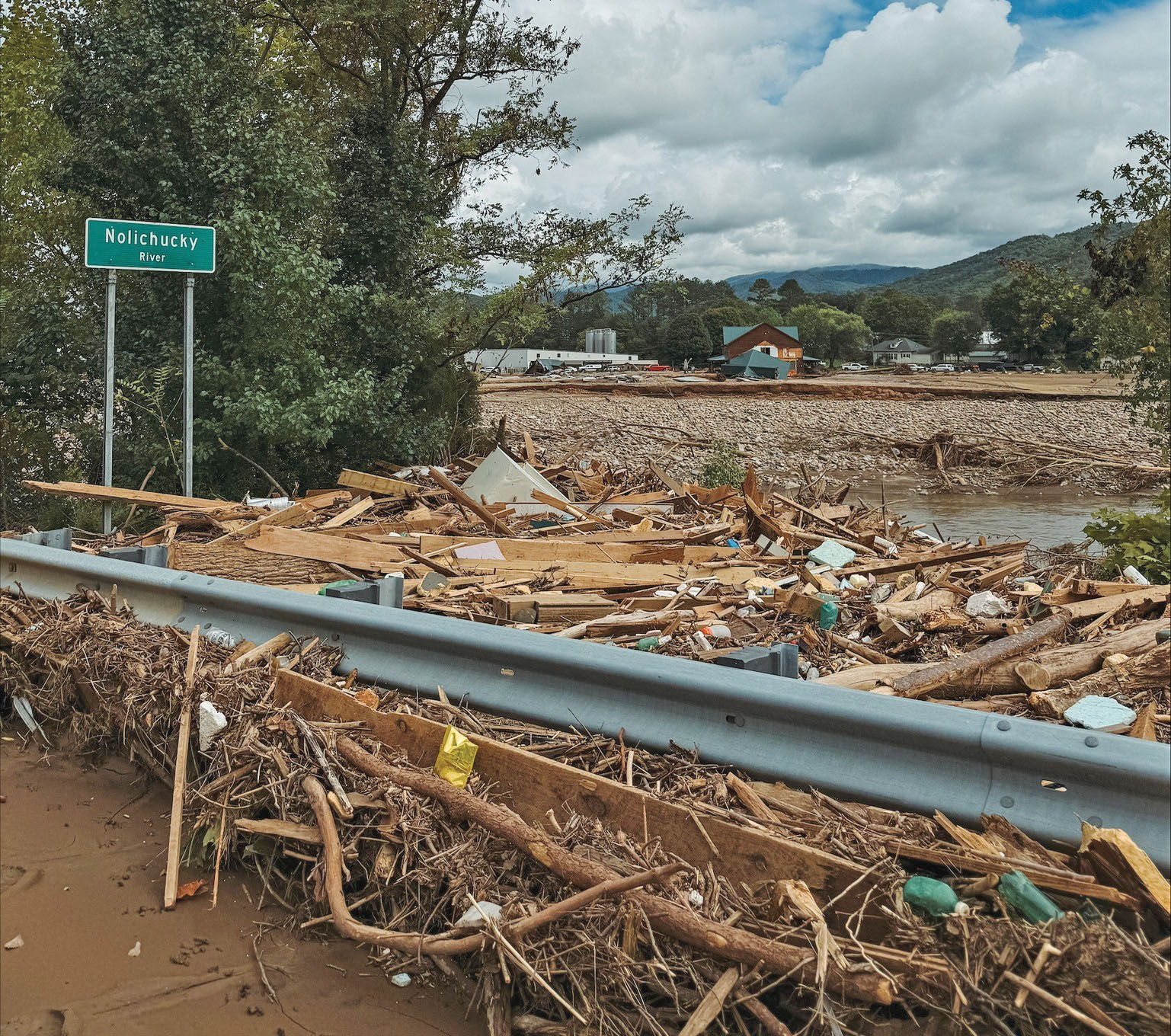The devastating high winds and torrential rainfalls of Hurricane Helene slammed into southeastern states, leaving more than 200 dead in six states reported so far. Helene made landfall September 26 as a Category 4 storm in Florida’s Big Bend, then bisected Georgia on a northward course before swerving west across Tennessee and Kentucky, leaving behind flooding and power outages.
Remnants of the hurricane dropped an estimated 40 trillion gallons of water on the Southeast in a short period. Some of that rainfall is ending up in the Mississippi River basin. In Memphis, Tenn., the river had fallen to -10 feet at one point, and rainfall from Helene allowed for a small rise to -3 feet by the end of September.
The National Oceanic and Atmospheric Association reported its Ohio River gauge just upstream from the confluence of the Mississippi River in Cairo, Ill., was at 13.68 feet at 10 a.m. September 27, then rose to a high of 22.74 feet by 10 a.m. September 30 before beginning to recede again.
On September 30, all tow size and load level restrictions were lifted on the Lower Mississippi, according to Randy Chamness, chairman of the Lower Mississippi River Commission (LOMRC). Chamness said the Lower Mississippi will get a 16-foot boost from Helene, as gauges in New Orleans rise from –9 to 7 feet. While the rush of water from Helene is welcome, he said, the rise is washing away many buoys because it’s coming all at once.
“It’s that buoy situation that is causing more risk,” he said.
Devastating Rains, Flood, Landslides
Georgia, South Carolina, Alabama and Florida reported deaths and severe damage from Helene. Six towns on Florida’s Gulf Coast saw record-breaking storm surges, with the town of Cedar Key getting a 9-foot surge. The federal government has declared public health emergencies in North Carolina, Virginia, Florida and Georgia so far. In Atlanta, heavy rains flooded streets and submerged cars.
About 2.1 million people in those states lost power, according to PowerOutage.com. According to the National Weather Service, South Carolina and Georgia got 12 to 14 inches of rain, and Florida received 12 to 16 inches. In one rural Virginia county west of Richmond, Nelson County, 133 bridges were washed away.
Western North Carolina appears to have gotten the brunt of the destruction. North Carolina Gov. Roy Cooper called Helene “one of the worst storms in modern history for parts of western North Carolina.” Buncombe County, N.C., officials confirmed at least 61 deaths there as of October 3.The National Climatic Data Center, headquartered in Asheville, N.C., a city of almost 100,000 in Buncombe County, is offline as power is down.
Reports and images from Buncombe County show houses, roads and bridges completely swept away, and mudslides racing down hillsides and obliterating buildings. First-hand observers of storm damage repeatedly used phrases like “It looked like a bomb went off.”
Hundreds of North Carolina roads were closed, and 25 shelters were reported to be housing more than 1,100 people, Cooper’s office said in a news release. Not just low-lying areas were at risk. Even at high elevations, the mountainsides channeled rainfalls of between 15 and 30 inches into swollen streams until they became raging floods, washing away houses and roads.
Col. Robert Green, commander of the Nashville Engineer District, began his presentation at the Tennessee River Valley Association and Tennessee-Cumberland Waterways Council’s annual meeting on October 1 by remembering those lost in Hurricane Helene and the historic storm surge and flooding that followed, asking for thoughts and prayers and noting that search and rescue missions were continuing.
The Corps has been “very heavily involved” in response involving tributary systems of the Tennessee River, especially in western North Carolina and eastern Tennessee, he said. The district is working closely with the Federal Emergency Management Agency as well as state officials to respond as quickly as possible, he said.
He added that he expected an emergency declaration in the following days, which would allow the Corps to begin assisting with debris cleanup.
“In many cases these were floods that were several feet above the historic record that’s ever been recorded in this region,” Green said. “We didn’t have any project failures. We had some that were of concern from the smaller hydropower dams, but all of those projects held up and prevented this disaster from being any worse.”
Dan Pallme, assistant chief of passenger transportation, rail and freight for the Tennessee Department of Transportation, said at the conference that TDOT had inspected more than 100 bridges in the area and found 14 out of commission and five completely gone. Most are on county or rural roads, although Interstate 40 was shut down in both Tennessee and North Carolina due to washouts. Railroads had issues with minor arterials only, Pallme added.
————
Featured photo caption: State and federal agencies are working together to respond to historic flooding from the remnants of Hurricane Helene, especially in hard-hit east Tennessee and western North Carolina. (Photo courtesy of the Tennessee Emergency Management Agency)




